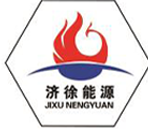
Nov . 07, 2024 08:31
Back to list
Pressure Relief Valves for Safe Operation and Efficient Pressure Management
Understanding Pressure Relief Valves A Key Component in Safety Engineering
Pressure relief valves (PRVs) play a crucial role in the safety and efficiency of many industrial systems. These devices are designed to prevent overpressure incidents that could lead to catastrophic failures, including explosions or equipment damage. Understanding the workings of PRVs, their applications, and maintenance protocols is essential for engineers and operators in various sectors, including manufacturing, oil and gas, and chemical processing.
What are Pressure Relief Valves?
Pressure relief valves are safety devices used to control or limit the pressure in a system. When the pressure exceeds a predetermined level, the valve opens to release excess pressure, thus protecting equipment and ensuring the safety of personnel. They can be classified into different types based on their operational principles and design, such as spring-loaded valves, pilot-operated valves, and rupture disks.
1. Spring-Loaded Valves The most common type, these valves use a spring mechanism to hold the gate closed until the set pressure point is reached. Once this point is exceeded, the spring compresses and allows the valve to open.
2. Pilot-Operated Valves These valves utilize a smaller pilot valve to initiate the opening of the larger, main valve. They are often used in high-pressure applications due to their ability to maintain tight sealing under normal operating conditions.
3. Rupture Disks Unlike the other types of valves, rupture disks are designed to fail at a preset pressure level. They offer a simple and reliable solution for pressure relief and are often used in conjunction with other types of valves.
Applications of Pressure Relief Valves
.
- Oil and Gas In this sector, PRVs are critical in refining processes and pipeline systems, where fluctuations in pressure can be frequent and substantial. They help to maintain the integrity of pipelines and processing equipment.
صمامات تخفيف الضغط

- Chemical Processing Chemical plants often deal with volatile substances that require stringent pressure controls. PRVs safeguard reactors and storage tanks by venting excess pressure and preventing explosive conditions.
- Manufacturing In many manufacturing applications involving steam or hydraulic systems, PRVs ensure that pressure levels remain within safe limits to prevent machinery failure and accidents.
The Importance of Maintenance
Regular maintenance of pressure relief valves is vital to ensure their reliability and performance. Over time, valves can become clogged with debris, suffer from wear and tear, or experience corrosion, which can lead to malfunction. A well-structured maintenance schedule should include
- Testing Routine testing of the valve's operational parameters is necessary to confirm that it opens at the right pressure. This ensures reliability during emergency situations.
- Inspection Visually inspecting valves for signs of corrosion, leaks, or mechanical damage can identify issues before they become serious problems.
- Cleaning Keeping valves free from debris and particulates is essential for their functionality. Regular cleaning can prevent blockages that may prevent the valve from operating correctly.
- Replacement Over time, all mechanical components have a finite lifespan. Recognizing when a valve needs to be replaced is critical for maintaining system integrity.
Conclusion
Pressure relief valves are the unsung heroes of industrial safety. By understanding their function, applications, and maintenance requirements, engineers and operators can better protect their systems, environments, and personnel from the dangers of overpressure. As industries continue to evolve and tackle new challenges, the importance of effective pressure management with PRVs will only grow, making them an indispensable part of operational safety strategies. Investing in quality valves and ensuring their proper maintenance will not only save costs related to equipment failure but also safeguard lives and enhance overall operational efficiency.
Latest news
-
Safety Valve Spring-Loaded Design Overpressure ProtectionNewsJul.25,2025
-
Precision Voltage Regulator AC5 Accuracy Grade PerformanceNewsJul.25,2025
-
Natural Gas Pressure Regulating Skid Industrial Pipeline ApplicationsNewsJul.25,2025
-
Natural Gas Filter Stainless Steel Mesh Element DesignNewsJul.25,2025
-
Gas Pressure Regulator Valve Direct-Acting Spring-Loaded DesignNewsJul.25,2025
-
Decompression Equipment Multi-Stage Heat Exchange System DesignNewsJul.25,2025

